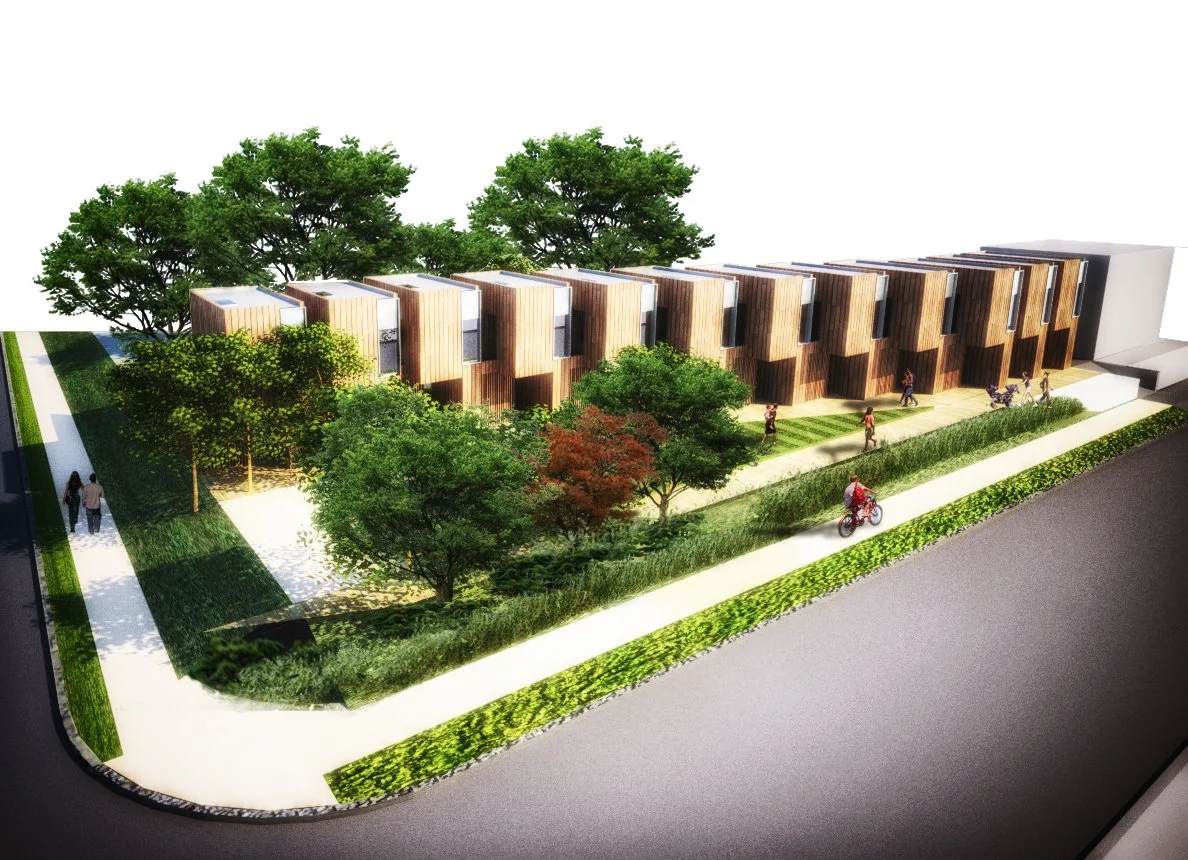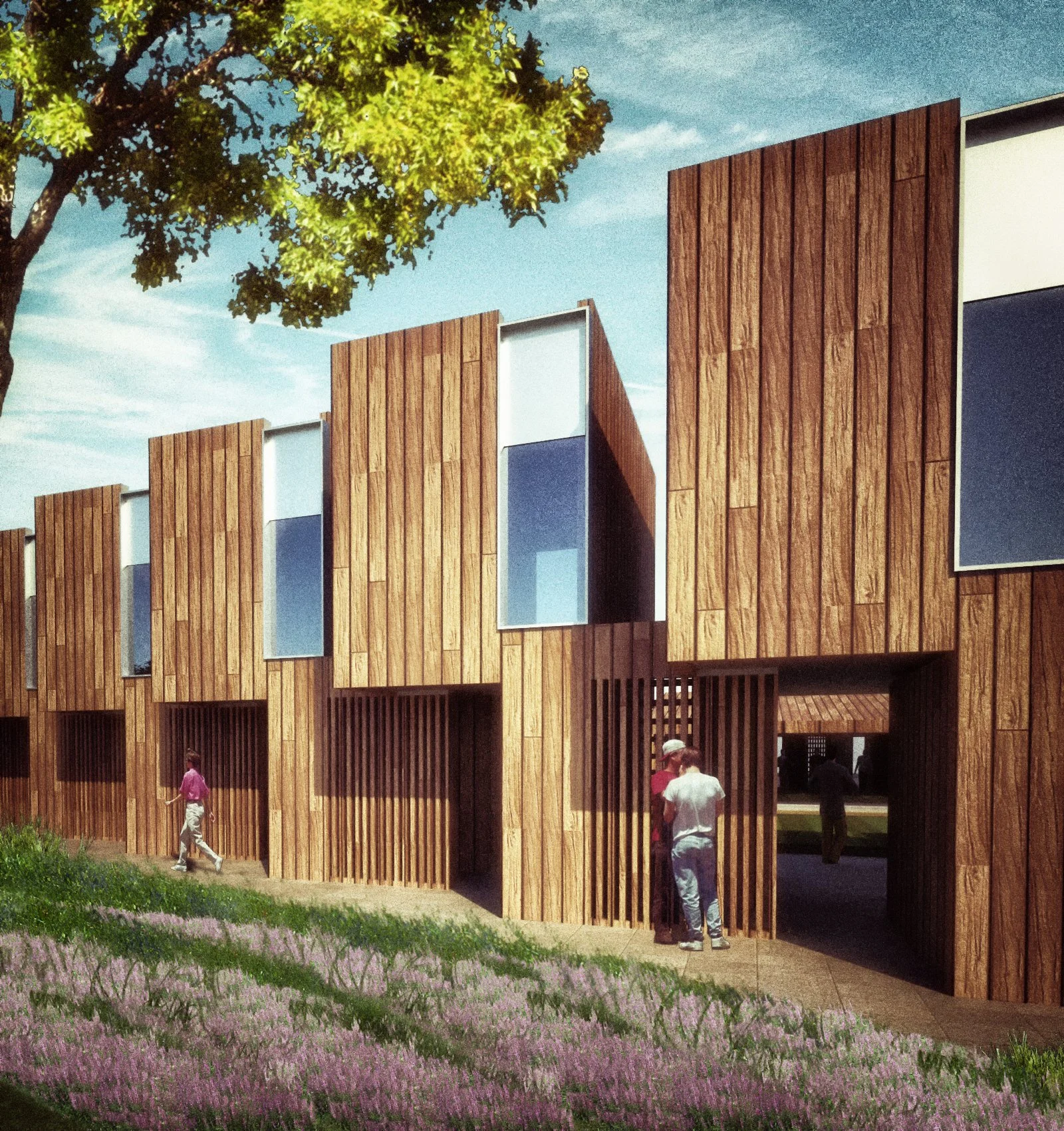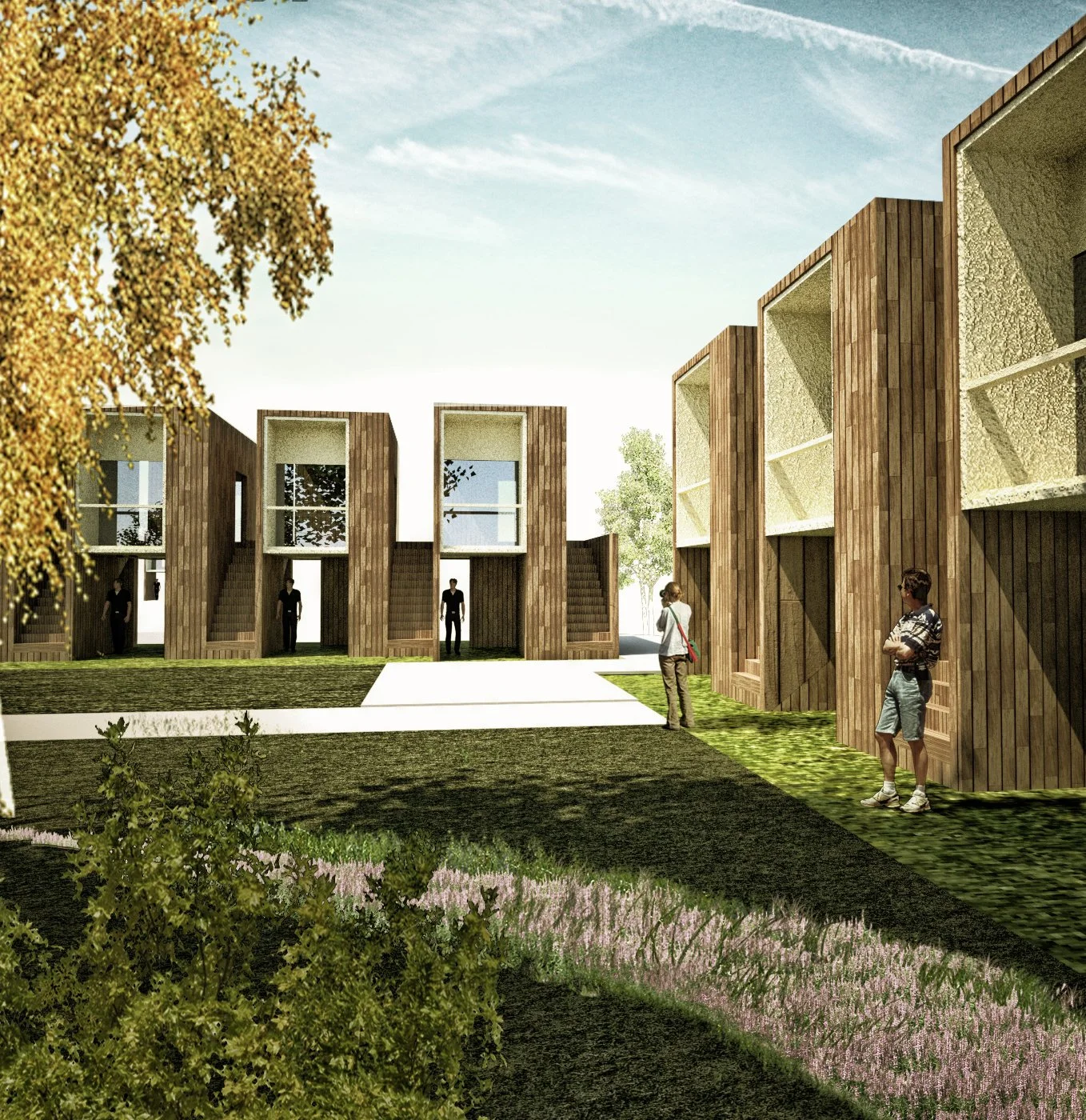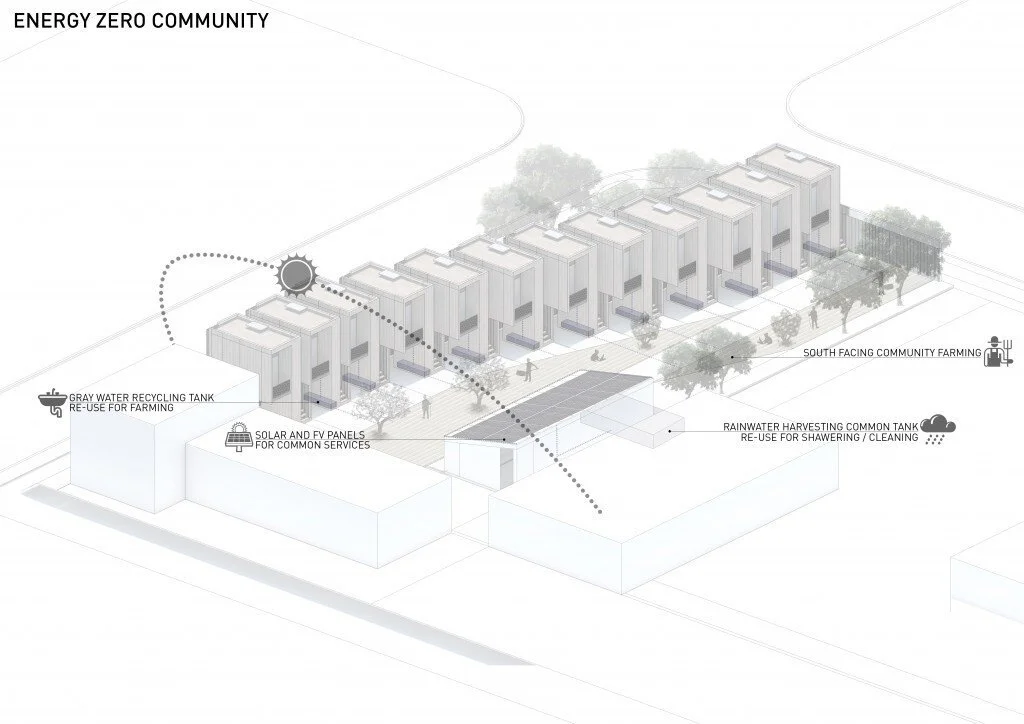
TINYHOUSE COMPETITION
Raleigh, USA | Competition Award |
Located across four vacant city-owned lots just outside Historic Boylan Heights in Raleigh, this project envisions a tiny home community that provides more than shelter—it restores dignity and fosters belonging. The design emphasizes creating a neighborhood of homes that offer residents a strong sense of identity, while integrating seamlessly into both the existing and future urban fabric.
The challenge for us was not to design a Tiny House, but to design a community of houses that not only dignifies its inhabitants with a sense of identity but also integrates the project to the existing (and future) urban fabric.
In our minds the proposal was all about integration, in all different scales and in different meanings. It was important to us that each living unit, was provided access from the street in the front and to the garden in the back. In this sense the unit is very flexible, allowing the front to be the back and the back to be the front.
Environmental design: proper orientation of the houses, proper orientation of gardens, proper orientation of windows, crossed ventilation, weather insulation preserving energy consumption, solar panels to provide sufficient energy for the complex, rain water collection to be reuse in toilettes and watering the gardens, gray water treatment to be used in watering, rain water harvesting for showers and cleaning.
Prefabricated and modular + “in situ” Construction: this project aims to combine the precision and fast track construction and methods of prefabrication and “in situ” construction. The construction process starts on both ends, in the shop with the prefabricated units and on site with the foundations.
Foundations, structural walls for the 1st level, and closets are to be built on site while living unit on the second floor and stair is to be fabricated in the shop and brought to the site when structural wall are ready for them. The prefabricated aspect of the proposal will allow placing of the unit in different locations as well as re-locate the units to new areas.







